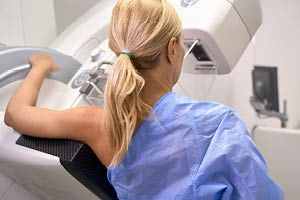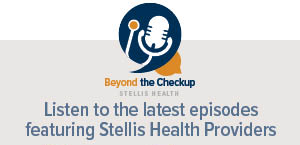What You Might Not Know About Breast Cancer
Beyond the pink ribbons: lesser-known facts, early signs, and what to really talk to your provider about this October
Every October, pink ribbons show up everywhere, from store shelves to football games. But while awareness is important, there’s still a lot that gets left out of the conversation.
This Breast Cancer Awareness Month, let’s go beyond reminders to “get your mammogram” and talk about the things more people should know but often don’t.
1. Breast Cancer Isn’t Always a Lump

Most people associate breast cancer with a lump you can feel. But many early signs are subtler:
- A sudden change in breast size or shape
- Dimpling or puckering of the skin
- Itching, irritation, or redness
- Nipple discharge or inversion
Why it matters: Not all breast cancers present as obvious lumps. Inflammatory breast cancer, for instance, often shows up as skin changes—not a mass.
What to do: If you notice any changes in your breasts, talk to your provider, even if your last mammogram was normal.
2. Men Get Breast Cancer Too

It’s rare, but it’s real.
About 1 in every 100 breast cancer diagnoses in the U.S. is in a man.
Why it matters: Because male breast cancer isn’t widely discussed, many men ignore early signs like lumps or nipple changes.
What to do: Men should also do occasional self-checks and talk to their doctor if something feels off—especially if there’s a family history.
3. Your Breasts Change Over Time, and That’s Normal

Hormonal shifts, weight changes, and aging all impact breast tissue.
What’s “normal” at 25 won’t be the same at 55.
Why it matters: Knowing your baseline helps you notice real changes. That’s why self-awareness is just as important as self-exams.
What to do: Take time once a month to look and feel. If something doesn’t seem right, it’s worth a conversation.
4. Dense Breast Tissue Can Make Cancer Harder to Spot

If you have dense breasts (more fibrous or glandular tissue than fat), it can be harder to detect abnormalities on a mammogram.
Why it matters: Dense tissue can both increase breast cancer risk and hide small tumors.
What to do: If you’ve been told you have dense breasts, ask your provider whether supplemental imaging (like ultrasound or 3D mammography) is recommended.
5. Lifestyle Still Matters

Breast cancer isn’t always preventable—but you can reduce your risk.
- Maintain a healthy weight
- Limit alcohol intake
- Stay physically active
- Eat a diet rich in fruits and vegetables
Why it matters: Up to 30% of breast cancer cases could be linked to modifiable risk factors, according to the American Cancer Society.
What to do: Start with small, sustainable changes. Your provider can help you set realistic wellness goals.
Your Provider is Your Best Ally
Whether it’s discussing dense breast tissue, family history, or new symptoms, your provider is here to listen, answer your questions, and help you stay proactive.
At Stellis Health, we offer routine breast exams, mammogram, and support every step of the way. If you’re unsure when your last breast exam was, or if you’ve never had one—this is your sign to schedule a visit.
Schedule your next appointment today, using MyChart or https://stellishealth.com/appointments






